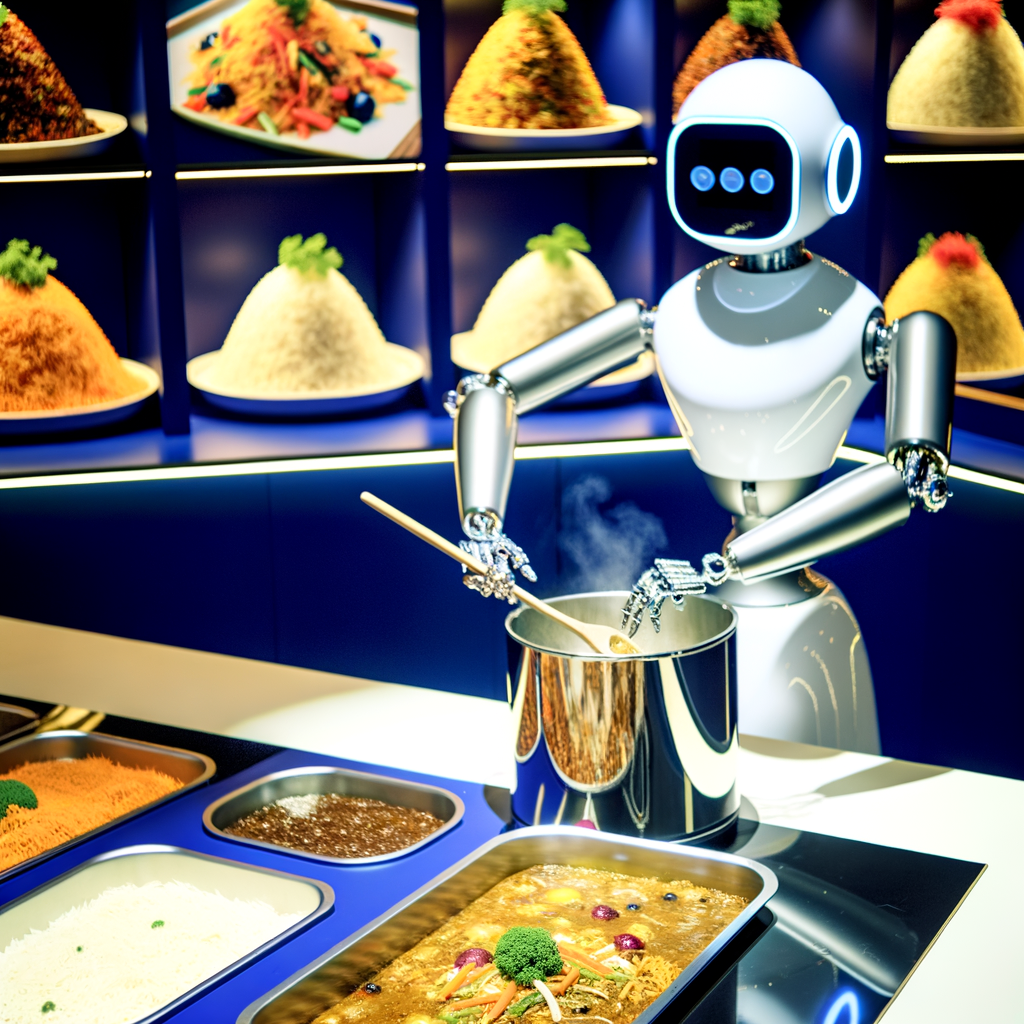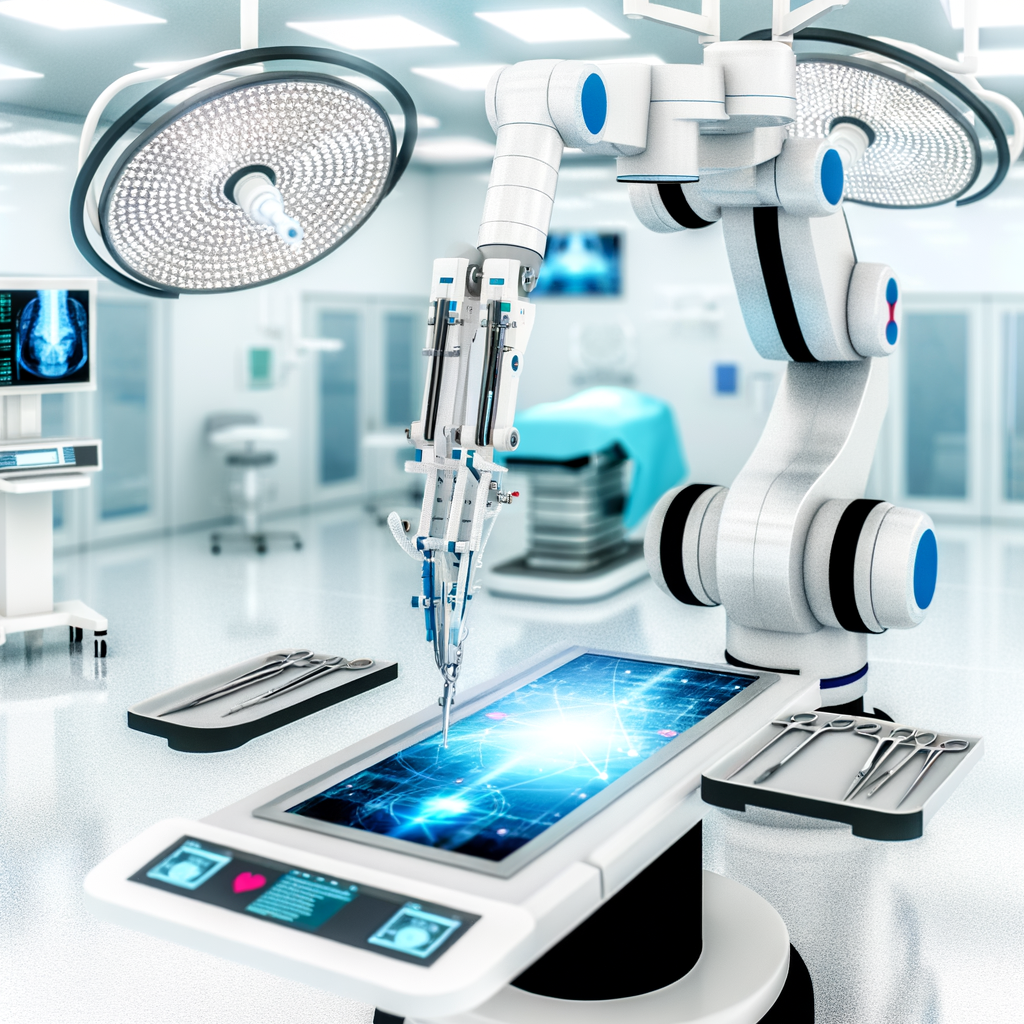# Robotic Biryani Revolution
Biryani – the aromatic, spicy, mouth-watering dish that is a staple in South Asian cuisine – has now received a futuristic makeover thanks to Nala Robotics. The tech company recently made waves by unveiling BiryaNIMAN, the world’s first robotic biryani maker, capable of whipping up a staggering 100 varieties of biryani with unparalleled consistency. Forget standing over a hot stove; the age-old art of cooking biryani has been automated.
But one has to ask: Can a robot truly capture the heart and soul of this beloved dish? Let’s dig in.
—
## A Culinary Feat Powered by Technology
Nala Robotics, a venture at the crossroads of culinary arts and cutting-edge technology, aims to change how we perceive cooking. The introduction of BiryaNIMAN is part of their bold vision: reimagining traditional cuisine with the precision of robotics.
Imagine the scene—an intricately designed robot assembling fresh spices, rice, and marinated meat with surgical-like accuracy. That’s exactly what BiryaNIMAN does. Whether you’re craving a Hyderabadi delicacy, a vegetarian twist on a classic, or a regional spin from Kolkata or Lucknow, BiryaNIMAN promises a level of precision and consistency that even the most seasoned of chefs may find difficult to match.
Here’s what BiryaNIMAN brings to the table:
Now you might wonder, how exactly does this bot, born in a lab, handle a dish so rooted in tradition and culture?
—
## Can a Robot Capture the Essence of Biryani?
Biryani isn’t just food; it’s an experience. The blend of fragrant basmati rice, aromatic spices, tender meats (or succulent veggies), slow-cooked to perfection—this dish is as much about technique as it is about taste.
But as more kitchens lean toward automation to address accuracy and efficiency, the rise of culinary robots like BiryaNIMAN comes as no surprise. With algorithms in place, the machine can adjust water content, monitor cooking times, and recalibrate spice balances based on changing variables, ensuring that every serving is perfect. Automated taste control? We’ve officially stepped into the future.
And for a dish that is famously tricky to master, this level of precision can be game-changing. BiryaNIMAN’s versatile programming means it can tweak regional tweaks effortlessly, mirror those nuanced spice levels, and serve up plates with the exact same flavor night after night. Gone are the days when biryani could be “just a bit off” because of a teaspoon extra of masala or a minute too less in the oven.
The real question? Whether automation can still deliver the charisma of a chef-made biryani. After all, half the magic comes from a human touch… doesn’t it?
—
## Robots in the Kitchen: Evolving Taste, One Plate at a Time
BiryaNIMAN is just one player in an emerging trend of high-tech machinery entering our kitchens. Beyond novelty, there is sound reasoning for robots in cooking. Precision, hygiene, and efficiency are advantages that any commercial or home kitchen can appreciate. Like its robotic counterparts already making sushi, burgers, or pizzas, Nala Robotics’ BiryaNIMAN uses sensors, AI-powered assistants, and complex programming to create food that is customized and made to order.
However, food tech enthusiasts know that the journey is not without challenges. For traditionalists – especially in gastronomy – the introduction of a robot into culinary artistry can feel disruptive, even soulless. For many, the process of cooking is as valuable as the eating itself. The human improvisation, spontaneous touch, and just “something special” might be tough to match, even with the most advanced programming.
Yet, Nala Robotics’ entry into robotic cooking isn’t about replacing chefs; it’s about assisting. The BiryaNIMAN can alleviate the pressures of precision, leaving chefs more time for creativity and possibly perfect that secret sauce.
According to Nala Robotics, BiryaNIMAN isn’t just for the fast-food chains or high-volume restaurants, but also homes where culinary enthusiasts want to experiment but may not have the expertise to replicate complex dishes. That means a broader audience can access authentically made biryani at the push of a button.
—
## What Should We Expect From Here?
While some kitchens may be rethinking their reliance on human staff in the coming years, the prospect of the BiryaNIMAN offers us something curious: a glimpse into the future of food culture.
Imagine a world where:
And all this opens a bigger conversation about where the line between tradition and technology meets. Does the rise of cooking bots, starting with one that makes a specialized delicacy like biryani, signal an era where food technology takes full control of our meals? Or will cooking remain a symbol of human culture—and invention—throughout time?
—
## Future Implications: Efficiency Meets Flavor
While BiryaNIMAN’s technical prowess is undeniably impressive, it poses some questions for the broader food industry. If consistency and speed are the future goals in restaurant settings, robots may soon dominate in kitchens across the globe. And while the current discourse is around niche applications like biryani, it could very well expand to even more complex cuisines in future iterations.
One thing’s for certain: Nala Robotics has set the stage for a discussion that touches on both gastronomical traditions and our increasing reliance on automation and robotics.
The future of biryani making, it seems, has arrived—and it’s via a sleek, stainless steel robot named BiryaNIMAN.
—
## Final Thoughts: Embracing the Robotic Kitchen
Eating food cooked by a robot may have felt like the stuff of science fiction just a few years ago—yet here we are, watching BiryaNIMAN herald the next culinary revolution. Should you be excited? Yes. Should you be slightly cautious? Perhaps.
There’s no doubt that the robot can deliver on consistency and efficiency. Whether this spells the beginning of a widespread robotic movement in cooking, only time will tell. One thing’s for sure—the next time you crave the aromatic indulgence of a well-cooked biryani, don’t be surprised if it’s prepared by an engineer’s metal creation rather than a chef’s steady hand.
One taste and you might just be a convert of this Robotic Biryani Revolution.



